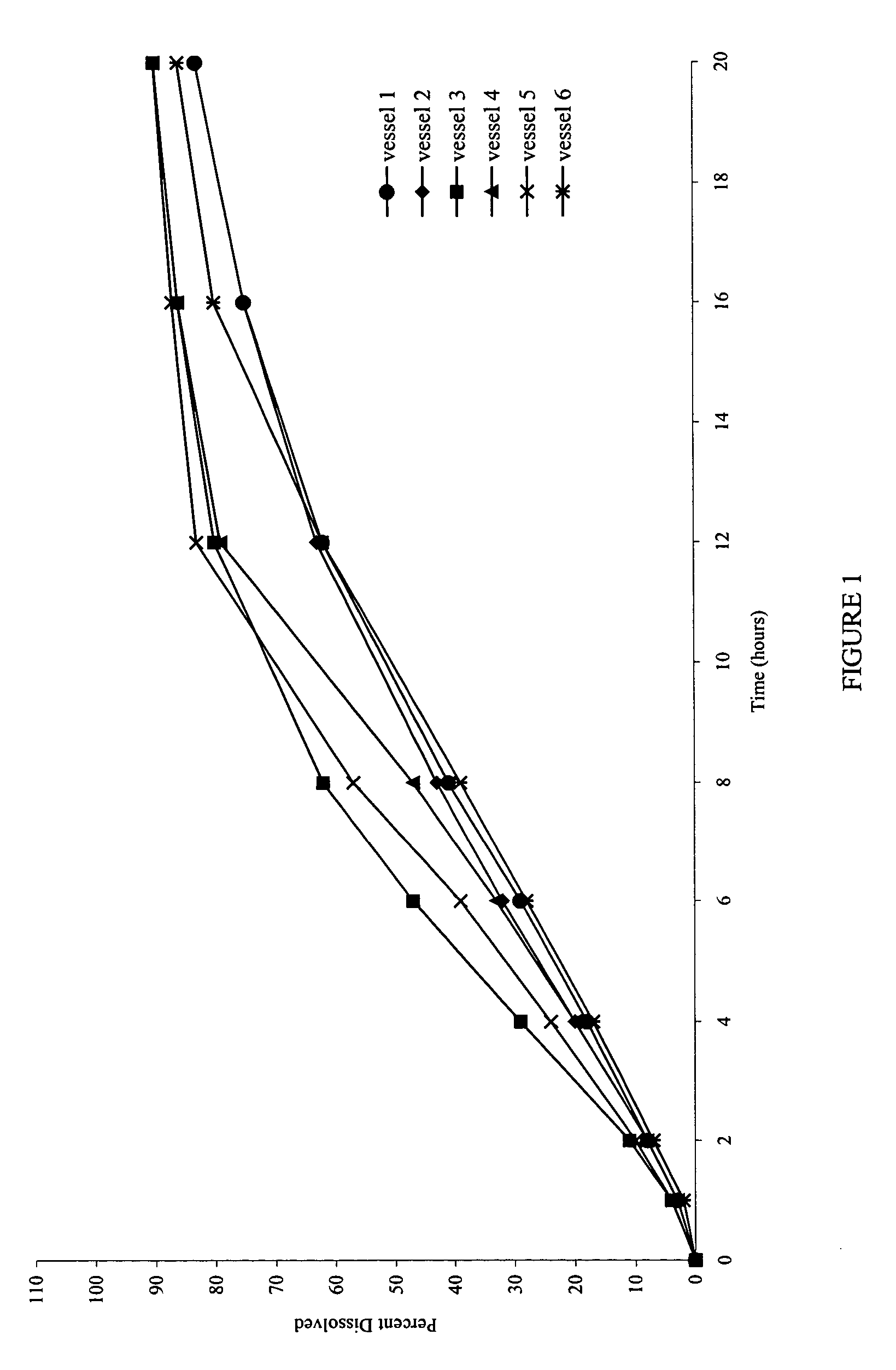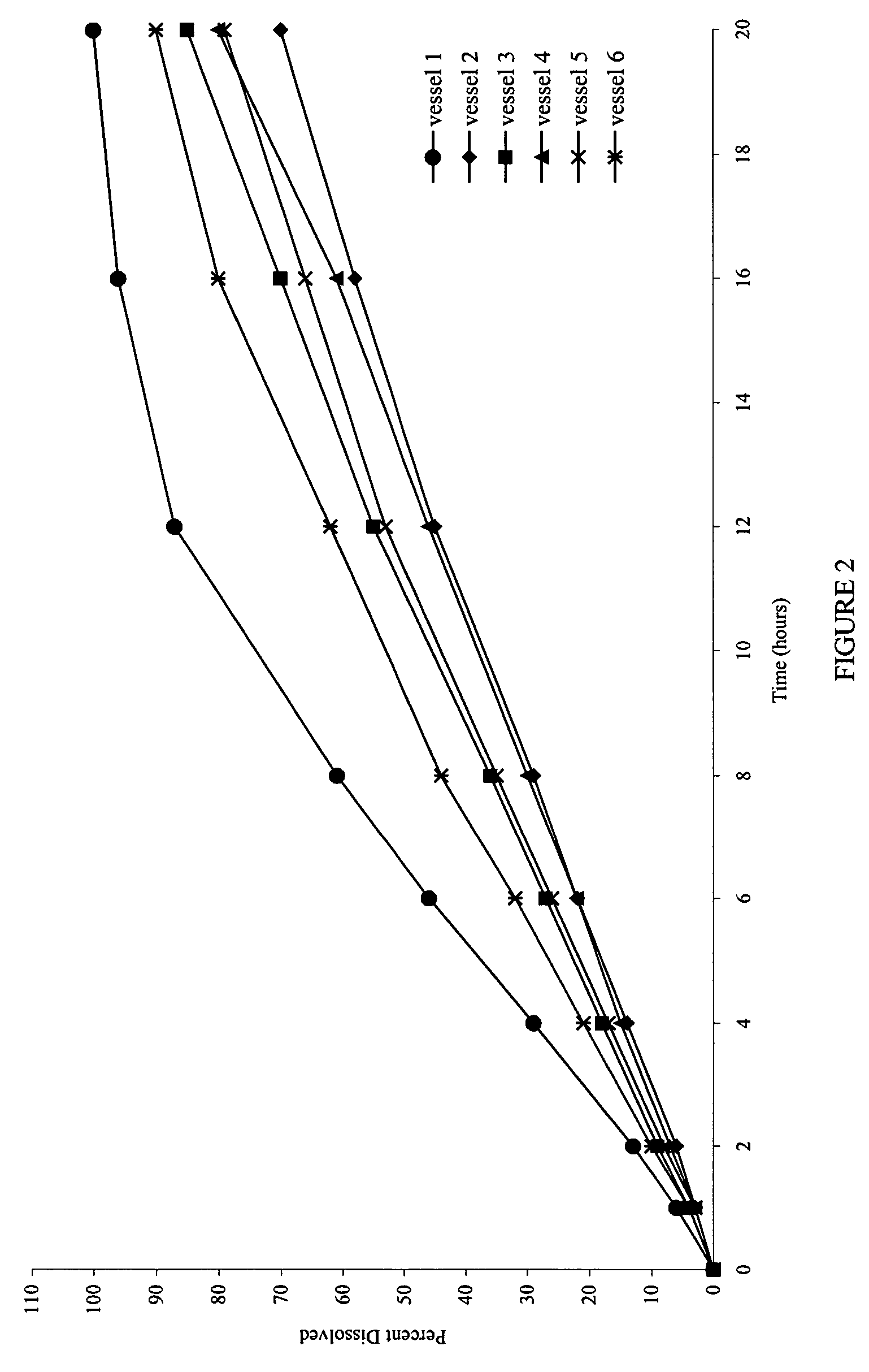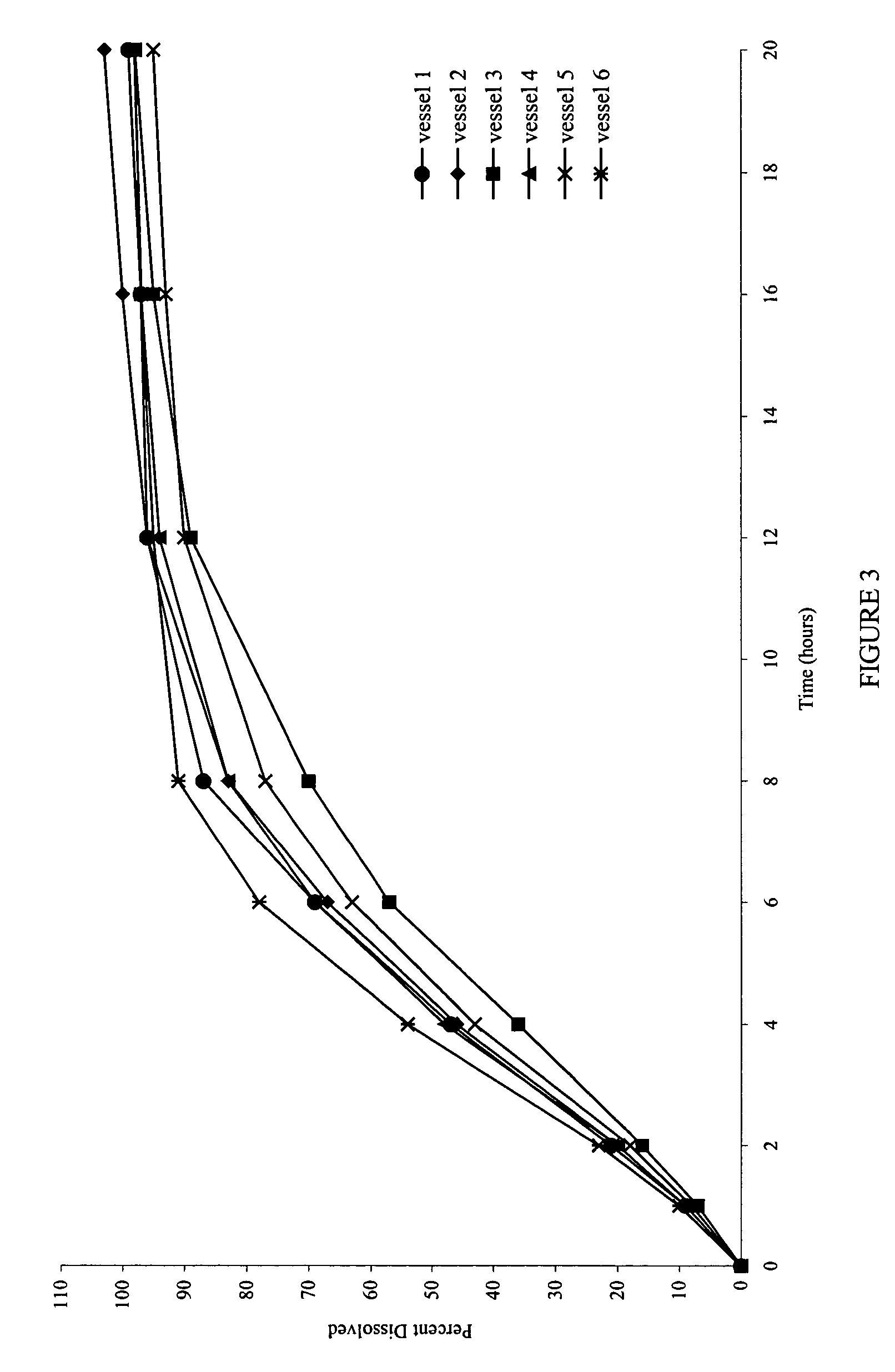Osmotic delivery of therapeutic compounds by solubility enhancement
a technology of solubility enhancement and osmotic delivery, which is applied in the direction of capsule delivery, metabolism disorder, medical preparations, etc., can solve the problems of limited bioavailability, no solubilizer disclosed is capable of fully solubilizing glipizide, and the elemental osmotic system will not function properly, etc., to achieve high drug load, low aqueous solubility, and high solubility
- Summary
- Abstract
- Description
- Claims
- Application Information
AI Technical Summary
Benefits of technology
Problems solved by technology
Method used
Image
Examples
example 1
Solubility Studies
[0061]Solubility studies were undertaken to examine the effect of solubilizers on glipizide. Samples were prepared using either meglumine or sodium lauryl sulfate (SLS).
[0062]One percent, 5%, and 10% solutions of meglumine were prepared. Glipizide was added to each vial of the meglumine solution until the solution was saturated with respect to glipizide (see Table 1).
[0063]The samples were placed on a mechanical rotator for approximately 24 hours. The samples were filtered with 0.2 um Acrodisc® filters.
[0064]One percent, 5% and 10% solutions of SLS were prepared in the same way as the meglumine solutions, above. Table 2 provides the composition of these solutions. Solubility studies were carried out in the same manner as those with meglumine.
[0065]
TABLE 1Glipizide solubility samples containing meglumine as a solubilizerAmount ofAmount of waterAmount ofPercent SolutionMeglumine (g)(g)Glipizide (mg) 1%0.1110.01450 5%0.5110.4760010%1.0010.01750
[0066]
TABLE 2Glipizide s...
example 2
Formulation
[0069]Based on the solubility results in Example 1, (1) meglumine and (2) meglumine plus sodium lauryl sulfate (SLS) containing formulas were prepared (Tables 4 and 5).
[0070]
TABLE 4Formula containing meglumineMaterial%Glipizide2.24Xylitol CM90**44.45Maltrin ® M150* (wet)1.31Maltrin ® M150* (dry)45.09Meglumine4.94Magnesium Stearate0.98Stearic Acid0.98*Maltrin ® M150 Maltodextrins available from Grain Processing Corp., Muscatine, Iowa.**Xylitol, crystalline powder, available from Cultor Food Science of Ardsley, N.Y.
[0071]
TABLE 5Formula containing meglumine and SLSMaterialWeight %Glipizide2.27Xylitol CM9045Maltrin ® M150 (wet)1.33Maltrin ® M150 (dry)39.4Meglumine5SLS5Magnesium Stearate1Stearic Acid1
[0072]Both formulas were granulated using a GPCG-1 Glatt fluid bed (Glatt Air Techniques, Ramsey, N.J.). Glipizide, xylitol CM90, Maltrin M150, and meglumine were added to the fluid bed granulator and granulated by spraying Maltrin M150 solution (Maltrin wet) as a granulating flui...
example 3
Dissolution Variations
[0078]Also examined was the dissolution behavior of the meglumine / SLS containing core in a medium that simulates the gastrointestinal tract (GIT) fluid. Dissolution was carried out in simulated gastric fluid (SGF) for the first two hours, followed by simulated intestinal fluid (SIF) for the remainder of the time (18 Hrs). A simulated gastric fluid is composed of 2.0 gm sodium chloride, 3.2 gm purified pepsin in 7.0 ml of hydrochloric acid and sufficient quantity of water to make 1000 ml. The pH of the resulting solution is approximately 1.2. A simulated intestinal fluid is composed of 6.8 gm monobasic potassium phosphate, 0.62 gm sodium hydroxide, and 10 gm pancreatin. The pH of the resulting solution is adjusted to 6.8.
[0079]FIG. 6 shows the dissolution profiles in the simulated gastric and intestinal fluids as the dissolution media.
[0080]FIG. 7 shows that the dissolution profiles are comparable, and reproducible, irrespective of the type of media used.
PUM
 Login to View More
Login to View More Abstract
Description
Claims
Application Information
 Login to View More
Login to View More - R&D
- Intellectual Property
- Life Sciences
- Materials
- Tech Scout
- Unparalleled Data Quality
- Higher Quality Content
- 60% Fewer Hallucinations
Browse by: Latest US Patents, China's latest patents, Technical Efficacy Thesaurus, Application Domain, Technology Topic, Popular Technical Reports.
© 2025 PatSnap. All rights reserved.Legal|Privacy policy|Modern Slavery Act Transparency Statement|Sitemap|About US| Contact US: help@patsnap.com



